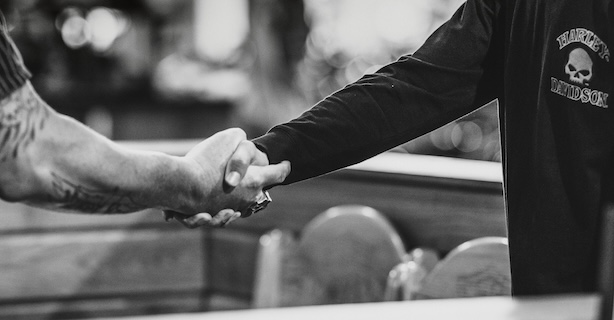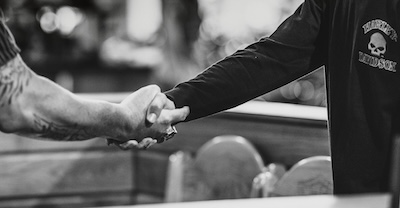Whether you're eyeing the latest model or simply moving on to greener pastures, trading in your motorcycle can be a savvy way to offset the cost of your next ride. But before you roll into the dealership, let's explore how to get the most bang for your bike and ensure you're not leaving money on the table.
The time has come to trade in your motorcycle. Maybe you're eyeing a newer model or simply moving on to another adventure. Either way, trading in your bike can be a smart way to offset the cost of a new purchase, but getting the most out of your trade-in requires a bit of preparation.
In this blog post, we’ll cover everything you need to know about getting the best possible deal! So, let’s get to it…
GET THE PAPERWORK READY
First things first, get all your paperwork in order. This includes the title, any service records, and your owner’s manual.
Having these basic maintenance documents ready shows the dealer that you've taken good care of your motorcycle and are serious about the trade-in process.
Title - Ensure you have the title or pink slip of the motorcycle. If you still owe money on the bike, you'll need to have the loan payoff information ready.
Service records - Gather all service and maintenance records. These documents can prove that you've maintained the bike well, potentially increasing its value.
Owner’s manual - Including the owner’s manual with your trade-in can be a nice touch, showing the dealer that you've kept all the necessary materials.
Original purchase documents - If you have the original bill of sale or purchase agreement, bring those along as well. They can help with determining the bike’s history.
Open Recalls - Open recalls are often excellent excuses for some dealers to reduce the price of your trade-in. Ensure these recalls have been addressed and provide proof that they have been resolved.
TAKE CARE OF PENDING ISSUES
Before you trade in your motorcycle, make sure to address any mechanical or cosmetic issues. Fixing minor problems can significantly increase your bike's trade-in value.
Mechanical Repairs
If there are any outstanding mechanical issues, consider having them fixed. Common problems like worn-out brakes, chain issues, or malfunctioning lights should be addressed.
Tire Condition
Make sure your tires are in good condition. If they're worn out, replacing them can make a difference in the trade-in value.
Cosmetic Fixes
Minor cosmetic fixes can go a long way. Touch up paint chips, fix minor dents, and replace any broken parts to make your bike look as good as new.
Fluid Levels
Check and top off all fluids, including oil, coolant, and brake fluid. A well-maintained bike is a more appealing trade-in.
Battery Health
Make sure your battery is in good condition. A weak or failing battery can be a red flag for dealers, signaling potential electrical issues. If needed, replace it to show that your motorcycle is reliable.
Brake Pads And Discs
Inspect your brake pads and discs for wear. Replacing worn brake pads and ensuring the discs are in good condition are not only important for the safe operation of the motorcycle, but also improves the perceived value of your bike.
Lighting And Indicators
Make sure all lights and indicators are working correctly. This includes headlights, taillights, brake lights, and turn signals. Replacing burnt-out bulbs or fixing any electrical issues are not only important for the safe operation of the motorcycle, but can enhance your bike's appeal.
GIVE THE BIKE THE WASH OF ITS LIFE
A clean motorcycle is more attractive and gives the impression that it has been well cared for. So, set aside some time to give your bike a thorough cleaning.
Wash the entire exterior of your bike, including the frame, wheels, and undercarriage. Use a good quality motorcycle cleaner to ensure a spotless finish.
After washing, apply a polish and wax to give your bike a shiny, like-new appearance. This not only looks great but also protects the paint.
Pay attention to the details. Clean the nooks and crannies, polish chrome parts, and ensure all plastic components are free of grime and residue.
Clean and condition the seat and handlebars. These are high-touch areas that dealers will notice immediately.
DOCUMENT THE BIKE’S SPECS AND MAINTENANCE
Having a detailed record of your bike's specifications and maintenance history can help in negotiations. Create a document that includes all relevant information.
List out the make, model, year, engine size, and any upgrades or modifications you’ve made.
Provide a detailed record of all maintenance work done on the bike, including oil changes, tire replacements, recalls, and major repairs.
Document any modifications or accessories that may add value to the bike, such as aftermarket exhausts, saddlebags, or custom paint jobs. Note, however, that not all modifications increase value; some might reduce it.
Create a condition report that highlights the current state of your motorcycle, noting any new parts or recent work done.
ASSESS YOUR MOTORCYCLE’S TRADE-IN VALUE
Understanding the value of your motorcycle is crucial before heading to the motorcycle dealership. There are several ways you can go about this.
Online valuation tools - Various websites nowadays can give you an estimated trade-in value based on your type of bike's make, model, year, and condition.
Market research - Check online auction marketplaces, forums, and classifieds to see what similar bike listings are selling for. This can give you a real-world idea of your bike's value.
Consider depreciation - Keep in mind that motorcycles depreciate over time. Factors like mileage, age, and overall condition will affect the trade-in value.
Professional appraisal - If you're unsure, consider getting a professional appraisal from a motorcycle expert. This can give you a more accurate valuation.
FIND A REPUTABLE DEALERSHIP
A good dealer will not only offer you a fair market price but also ensure a smooth and hassle-free process. Here's how to go about finding the right dealership:
Research Dealers
Start by doing your homework. Look for dealerships with a solid reputation and positive reviews in the motorcycle community. You can begin your search online, where customer reviews and ratings can provide valuable insights into the dealer's reliability and customer service.
Pay attention to recurring themes in the reviews – if multiple people mention excellent trade-in experiences, that's a good sign.
Ask Fellow Riders For Recommendations
Don't underestimate the power of word-of-mouth. Ask fellow motorcycle enthusiasts, friends, or members of local riding clubs about their experiences with dealerships.
Compare Offers
It's essential not to settle for the first offer you receive. Visit multiple dealerships to get a range of trade-in offers. This allows you to compare and see who provides the best value for your motorcycle.
When you receive an offer, don't be afraid to mention the offers you've received from other dealerships. Sometimes, a dealer might be willing to match or even exceed a competitor's offer to earn your business.
Consider Specialized Dealers
If you own a specific brand of motorcycle, consider going to a dealership that specializes in that brand. Specialized dealers often have a better understanding of the value of your bike and may offer a higher trade-in value due to their interest and expertise in your particular make and model.
For instance, if you own a Harley-Davidson® motorcycle, visiting an H-D® dealership might be more beneficial than a general motorcycle dealer.
Evaluate Customer Service
Customer service can make or break your trade-in experience. During your visits, observe how the staff interacts with customers.
Are they friendly and attentive?
Do they take the time to answer your questions thoroughly?
A dealership that cares about its customers is likely to offer a better trade-in process.
Transparency And Honesty
Look for a dealership that operates with transparency and honesty. They should be upfront about how they appraise your motorcycle and explain the factors that influence their offer.
Avoid motorcycle dealerships that pressure you into making quick decisions or those that seem evasive about the details of the trade-in process.
HAVE YOUR MOTORCYCLE APPRAISED BY A DEALER
Once you've chosen a dealership, you should get your motorcycle appraised. This is a crucial step in determining the trade-in value.
Schedule an appointment for an appraisal. This ensures the dealer has time to thoroughly inspect your bike in person. Make sure you bring all your documentation, including the maintenance records, condition report, and specifications. This information can support your case for a higher trade-in value.
Be honest about the condition of your bike. Dealers appreciate transparency and it can lead to a fairer appraisal. Don’t be afraid to ask the dealer questions about how they determined the value. Understanding their entire process can help you in negotiations.
TIME TO NEGOTIATE
Negotiation is an art, and getting the best trade-in value requires skill and confidence. Here are some tips to keep in mind.
Know your value - Go into the negotiation knowing the value of your bike based on your research and appraisals.
Be prepared to walk away - If the dealer’s offer is too low, be prepared to walk away. In some cases, showing that you're willing to leave can lead to a better offer.
Counter offers - Don’t accept the first offer. Counter with a reasonable higher number and see how the dealer responds. Negotiation is a give-and-take process.
Bundle deals - If you’re a potential buyer of a new bike from the same dealer, use that as leverage. Dealers may offer a better trade-in value if you’re purchasing from them.
Stay calm and polite. Negotiations can be stressful, but staying calm and polite can help you achieve a better outcome.
THINGS TO CONSIDER WHEN IT COMES TO TRADE-IN VALUE
Several factors affect your motorcycle’s trade-in value. Understanding these can help you maximize your return.
Low Mileage = High Price vs. High Mileage = Low Price
Motorcycles with low mileage typically fetch higher trade-in values. High mileage may significantly reduce the offer.
If your bike has high mileage, ensure it is well-maintained. Regular maintenance can help mitigate some of the market price depreciation caused by high mileage.
Pending Payoff Amount
If you still owe money on your motorcycle, the loan balance will affect your trade-in value. The dealer will subtract the payoff amount from the trade-in offer.
Should you owe more than the bike is worth, you’ll need to cover the difference. This is known as negative equity, and it’s important to be aware of this before negotiating.
A Motorcycle That's Been Dropped Takes A Big Hit
When preparing your motorcycle for a trade-in, it's important to consider its incident history. If your bike has been involved in an insurance mishap or has been dropped, this can significantly lower its trade-in value. Dealers typically view accident history as a potential risk, as it may indicate underlying damage or reduced structural integrity.
To mitigate the impact on your bike's value, provide detailed documentation of all repairs carried out after the incident. This documentation serves multiple purposes. Firstly, it reassures the dealer that the motorcycle has been properly repaired. Second, it demonstrates transparency on your part, building trust with the dealer.
Include records of all the parts replaced. Highlighting the use of genuine parts and professional repair services can further ease any concerns the motorcycle dealer might have about the bike's condition.
Extended Warranties
If your motorcycle has an extended warranty, check if it is transferable to the new owner. A transferable warranty may enhance the trade-in value as it assures the dealership and potential buyers of continued coverage.
Don't Get Greedy With Your Asking Price
It’s natural to want the highest possible value, but setting your asking price too high can be counterproductive. Instead, compare your asking price with similar types of bikes in the market. Aim for a competitive sale price that reflects the true value of your motorcycle.
Understand The Market
Understanding the market is crucial because it influences the trade-in value of your motorcycle. Various factors can affect the market, and being aware of these can help you get a better deal.
Seasonal trends - Motorcycle demand often increases in the spring and summer, which can boost trade-in values.
Economic conditions - A strong economy can lead to higher trade-in values, while a weak economy might lower them.
Brand popularity - Certain brands have higher resale values due to their popularity and reliability.
Model year - Newer models typically fetch higher trade-in values than older ones.
Local market demand - Research prices on classified marketplaces like Facebook Marketplace. High demand in your local market can positively impact your bike's trade-in value.
INSURANCE CONSIDERATIONS WHEN TRADING IN YOUR MOTORCYCLE
When preparing to trade in your motorcycle, considering the impact on your insurance is crucial.
Properly managing your motorcycle insurance coverage not only ensures a smooth transition but can also provide financial benefits and peace of mind. Here’s what you need to know to navigate the insurance landscape effectively during your motorcycle trade-in.
Impact on Your Existing Policy - When you trade in your motorcycle, you'll need to update or cancel your existing motorcycle insurance policy. Contact your insurance provider before the trade-in to understand the steps involved and any potential penalties or refunds.
Insurance on the New Motorcycle - When trading in for a new bike, your insurance premiums may change. Newer or more expensive motorcycles typically have higher insurance costs. Obtain quotes for the new bike before finalizing the trade-in to budget accurately.
Discounts and Benefits - Some insurance providers offer multi-bike discounts or loyalty discounts if you insure your new motorcycle with them. Ask your insurer about any applicable discounts when you trade in your old bike.
Coverage during Motorcycle replacement: If there's a period where you'll own both motorcycles (your old one and the new one), make sure you have coverage for both during this transition. Some insurers provide temporary coverage options for such scenarios.
WRAPPING UP
Trading in your motorcycle can be a great way to get value from your current ride and put it toward a new one. By following these tips and tricks, you can maximize your trade-in value and ensure a smooth, successful transaction.
From organizing your paperwork to negotiating confidently, every step you take can bring you closer to the best possible deal.
Related Reading
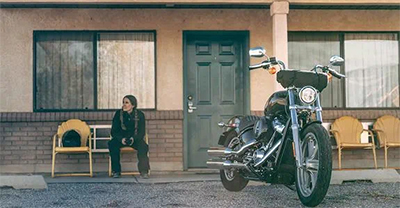
When transporting your motorcycle, you want it to arrive in the same condition it left. These tips will help your ride arrive safely and securely.
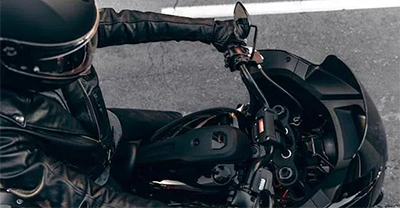
The insurance logistics to test ride a motorcycle can be complicated if there is an unforeseen motorcycle incident. Here’s everything you need to know.
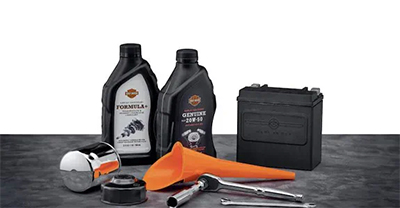
Follow this checklist of spring motorcycle maintenance tips to get your bike ready while waiting for the first nice day of the riding season. Learn more!

With gas prices going up, it’s time to ride your way to better savings. Here are five ways that motorcycles beat out the competition in the automotive industry.

